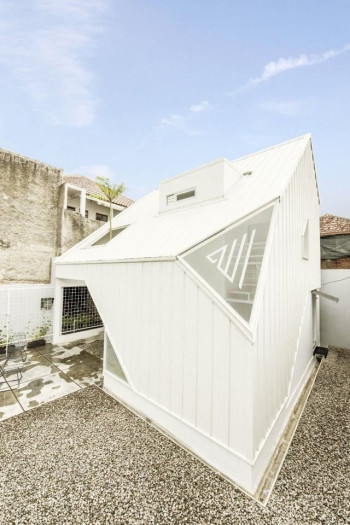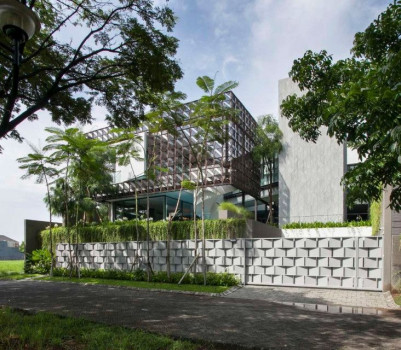Reliving Gedek: A Contemporary Interpretation of Local Craftsmanship



For years of history in Indonesia, a weaving technique has been utilised in numerous forms and purposes. Dated back to even before the colonial era, local people in different islands of Nusantara had shared similar weaving products in traditional clothing, ornaments, as well as parts of their vernacular architecture. Gedek, or woven bamboo sheets, for example, was an essential element to many traditional houses—enveloping of the houses’ interior.

©Wonders of Weaving / Mario Wibowo Photography
Since many people started to prefer better enclosure with sturdier, more massive materials like brick or even concrete for building walls, gedek has become less of an option. The intricacy of the weaving process and the material durability itself also hinder the widespread use. Not to mention the common perception of using gedek, that is rural and unsophisticated. However, to Lim Masulin of Wonders of Weaving, considering gedek as a promising alternative and sustainable material for today’s architecture is not a farfetched idea.

©Wonders of Weaving / Mario Wibowo Photography
Adaptability—believed to be one of the main values of vernacular architecture—has inspired Lim, MODERNSPACE, and Kayu Lapis Indonesia to present a pavilion as a reinterpretation of gedek and its potential in ARCH:ID. Adopting the basic triangular of many vernacular houses found in Indonesia, the architect utilised a triangle structure as the main module. These structural frames were made in repetition to create a triangular corridor that comprised two levels. Between the frames, the pavilion displayed different transparencies through varied materials, including plywood sheets and gedek panels.

©Wonders of Weaving / Mario Wibowo Photography
With only natural materials being used prominently, the pavilion appeared monolithic and at the same time captured both vernacular and contemporary qualities. At a glance, one may not realise that the triangular frames are made of plywood originated from meranti and keruing wood. These were made possible with the present technology of producing structural grade plywood along with Kayu Lapis Indonesia’s sustainable sourcing of timber.

©Wonders of Weaving / Mario Wibowo Photography
Derived from the original pattern of gedek, the weaving pattern of the gedek panels in this pavilion displayed transparency to connect the inside and the outside space while also being rigid enough to demarcate the two spaces. This feature has demonstrated that the modified gedek panels have a good ventilation property applicable for buildings in the tropics. The intricate woven pattern furthermore suggests that aside from being functional, it could as well highlight the process in creating the gedek panels and the sustainability they represented. With Wonders of Weaving and BYO Living, Lim initiated the movement of preserving and nurturing local weaving craftsmanship. This process has generated master weavers and enabled a community of skilled workers to create products that rival many current materials in terms of functionality and aesthetics.

©Wonders of Weaving / Mario Wibowo Photography
Through this installation, the presence of the gedek went far beyond adapting the vernacular element and replicating the value of tropical architecture. As a statement, the weaving, and the whole pavilion of Reliving Gedek has shown the unique potential and the progress of Indonesia’s local craftsmanship and architecture along with its sustainable characters.




 Australia
Australia
 New Zealand
New Zealand
 Philippines
Philippines
 Hongkong
Hongkong
 Singapore
Singapore
 Malaysia
Malaysia








